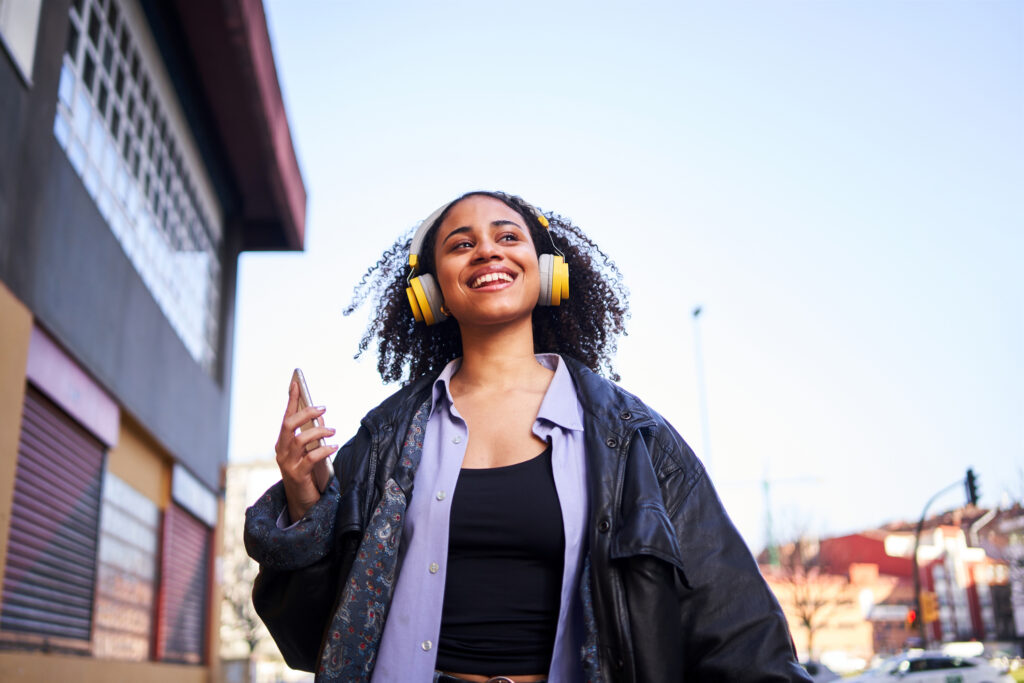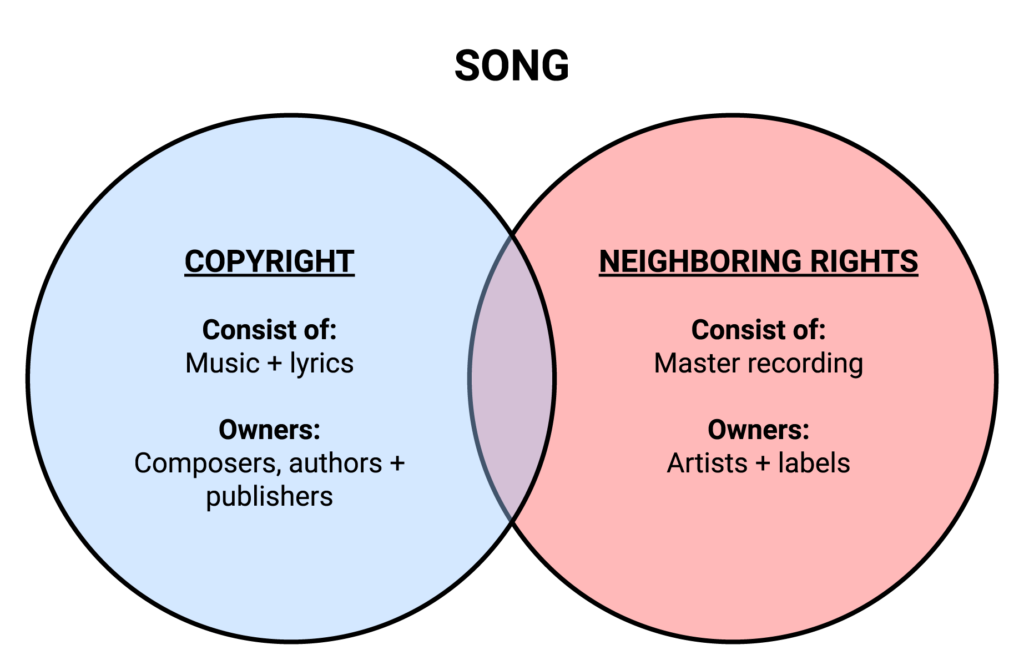While we’d all love to use any song we want for our audiovisual projects (film, advertising, TV shows, video games, etc.), it’s crucial to obtain the necessary permissions before the first broadcast. Using a song without the owner’s consent can lead to serious legal consequences.

To secure the rights to use music for a visual production, you purchase what’s known as a music license. When you start delving into music rights, it’s easy to get lost. To demystify the labyrinth of music licensing and avoid any legal issues, I’ve compiled a list of 5 essential music licenses you’ll often need to confidently incorporate music into your audiovisual projects.
The 2 aspects of a song
To understand how the different licenses work, you first need to know that there are two legal aspects to every song: copyright and neighboring rights.

For a song to be legally authorized for use in a visual production, all owners must approve.
1 – Sync License
Once granted, this license allows you to use the song’s composition (music and lyrics) to synchronize it with the moving images of an audiovisual work. It’s often referred to as a “music license.”
Sync licenses have been the most commonly used licenses in the music and audiovisual market for years. They are usually issued by one or more publishers.
2 – Master License
Once obtained, this license grants you the right to use the master recording of a song.
Keep in mind that there can be several master recordings of a song with the same composition. For example, to use Luidji’s song “Gisèle” performed by Emma Peters, you would need the master license from Emma Peters’ label, Docky Productions, rather than Luidji’s label, Foufoune Palace Bonjour.
At first glance, this license may seem similar to the synchronization license because both are necessary to place music in an audiovisual work.
However, they are not entirely the same. The sync license allows you to use the song’s composition, such as the sheet music or lyrics, to create new recordings or versions of the original song. This practice, called a cover (also known as a “rerecord”), is common in advertising because it allows the brand to add its own touch to the production while retaining the familiarity and impact of a popular song (see our article on using covers in advertising).
Therefore, if you want to use the original song, you’ll need both a sync license and a master license.
3 – Public Performance License
Once obtained, this license grants you the right to use a song for public broadcasts. In our context, this includes media broadcasts such as radio, television, or digital platforms.
After the synchronization license, this is probably the most commonly used music license. Whenever someone plays a song that isn’t their own in public, they must obtain and pay for this license.
The rights for this license are usually held by Performing Rights Organization (PROs). Each country has its own PRO, for example:
| Germany | GEMA | www.gema.de |
| Australia | APRA | www.apra.com.au |
| Canada | SOCAN | www.socan.ca |
| Spain | SGAE | www.sgae.es |
| United States | ASCAP BMI SESAC | www.ascap.com www.bmi.com www.sesac.com |
| France | SACEM | www.sacem.fr |
| Italy | SIAE | www.siae.it |
| Japan | JASRAC | www.jasrac.or.jp |
| Mexico | SACM | www.sacm.org.mx |
| United Kingdom | PRS | www.prs-formusic.com |
PROs collect music royalties from the aforementioned sources where the music is played and broadcast. They, in turn, distribute these royalties to artists based on how often their music is played and broadcast, after deducting a commission for their services.
That’s why, with each broadcast, the entity using the music must submit what’s called a cue sheet to their PRO. A cue sheet contains all the necessary information (broadcast date, artist, song title, duration, etc.) so that PROs can fairly distribute royalties to the owners. For example, you can download a sample cue sheet from ASCAP here.
4 – Mechanical Licence
A mechanical license is a contract between the user and the publisher of a musical work that the user intends to reproduce on any medium or format (CD, DVD, VHS, digital downloads, streaming, etc.).
In short, if you want to put a song on a soundtrack that you sell, use it in a video game, or make it available for download on the internet to promote a film, you’ll need to obtain a mechanical license from the music publisher and the affiliated performing rights society (e.g., SDRM in France, Harry Fox Agency in the United States).
The term “mechanical” is specific to reproducing a copyrighted work on a physical medium during the mechanical reproduction of music. If it reminds you of music boxes, it’s because, let’s admit it, this term is somewhat outdated. However, “mechanical license” is the commonly used term for this authorization in the industry.
The license is highly specific: it is limited to a specific composition as it is reproduced by the user. The license is also specific regarding the product’s catalog number, timing, and performer. Please note that licenses are not granted per album but rather per song. For instance, for a series of ten songs, you need an individual authorization for each one.
5 – Royalty-Free Music License
This type of license allows the user to purchase a single license to use the song without paying additional royalties to the publisher or the artist for each broadcast. However, purchasing this type of license does not grant copyright to the buyer but only negotiated usage rights with the owners.
In general, buying a license allows the buyer to use the music for a limited duration with specific terms agreed upon between the parties.
While there are no additional payments for the buyer, there may be restrictions on how the song can be used. Therefore, it’s crucial to carefully read the terms when using a royalty-free music license in your project to avoid any disputes.
So, these are the 5 licenses you’ll likely need for your projects! Depending on the medium (film, digital, television, video games, etc.) and the use of the music, you may not necessarily need all the licenses at the same time.
Every project is unique, and every negotiation is different. Sometimes, you may find that you lack the time or expertise and would benefit from professional assistance in your research, production, and negotiations. In such cases, it’s highly recommended to turn to agencies like Soundplify, specializing in music sync, to streamline your workflow and use music with confidence.
